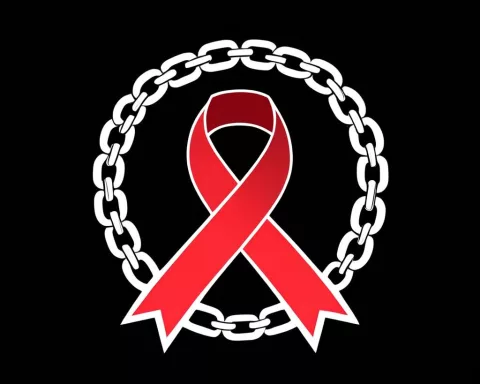A shocking event shook Wynberg Magistrate’s Court when a murder suspect was shot multiple times inside the building, revealing serious security flaws. The metal detectors were not working, allowing the gunman to enter and escape without being stopped. This tragic occurrence has sparked demands for better safety measures in courts across South Africa. Justice Minister Kubayi is calling for a nationwide review of security protocols to ensure that such a dangerous situation never happens again. The incident highlights the urgent need to protect those seeking justice in our legal system.
What happened during the chilling event at Wynberg Magistrate’s Court?
A murder suspect was shot multiple times inside Wynberg Magistrate’s Court, highlighting severe security failures. The attack exposed non-functioning metal detectors, raising urgent concerns over court safety. Justice Minister Kubayi has called for a nationwide review of security protocols to protect judicial integrity.
An Unsettling Incident in Wynberg
In the hushed corridors of Wynberg Magistrate’s Court, a deeply disturbing event transpired this week that has sent shockwaves through South Africa’s justice system. A murder suspect, connected to the infamous Vrygrond gang conflicts, met a brutal end within the court premises, starkly highlighting a significant security failure. This tragedy not only reveals systemic weaknesses but also sparks a vital discussion about the safety and integrity of judicial institutions when handling high-risk cases.
The grim assassination unfolded as the suspect awaited his hearing outside a courtroom, a setting supposedly designed to uphold justice and ensure safety. The suspect was fatally shot multiple times in the head, starkly illustrating the precarious boundary between order and chaos. Miraculously, the gunman bypassed security, entered the building armed, committed the heinous act, and then exited without facing any resistance, leaving both legal experts and the public in disbelief.
Faulty Security Measures Exposed
This audacious attack has laid bare significant flaws in the court’s security arrangements. It was later disclosed that the court’s metal detectors were not functioning at the time, leaving everyone in the building—from court officials to everyday citizens—vulnerable. In response, Justice Minister Mmamoloko Kubayi has called for an immediate investigation and a thorough review of court security nationwide. “This is no longer just a Wynberg issue. We must scrutinize how we are safeguarding our courts, particularly those handling dangerous criminal cases,” she emphasized, resonating with a public newly aware of the fragile state of judicial security.
Legal and security experts have not held back in their criticism, identifying the current safety protocols as not only outdated but woefully inadequate. Union representatives have sharply criticized the Department of Justice for its neglect, especially regarding the maintenance of essential security equipment like scanners and metal detectors. Court employees, who were only informed after the incident that the security systems were down, are now grappling with a sense of betrayal and intensified fear. This traumatic event has ignited demands for tighter access control, advanced security technologies, and more rigorous procedures, especially for cases involving organized crime suspects.
Historical and Artistic Perspectives
Reflecting on this shocking event, one cannot help but draw parallels to historical and artistic themes that grapple with vulnerability and the illusion of security. The Gothic architecture of medieval Europe, with its towering structures meant to protect and intimidate, comes to mind. Modern courts, like these ancient fortresses, are intended to serve as bastions of safety and order. Yet, much like those walls that eventually fell to unforeseen attacks, our contemporary institutions display cracks under persistent threats.
The seamless entry and exit by the shooter evoke a surreal atmosphere, reminiscent of the chaotic yet meticulously planned scenes in film noir narratives. This genre, often depicting the dark underbelly of urban life and the fragility of human constructs, seems eerily prophetic in the context of this real-life drama. The incident at Wynberg Magistrate’s Court prompts a sobering realization: despite outward appearances of robustness, our systems are often unprepared for the unexpected.
Practical Implications and Necessary Overhauls
Beyond artistic reflections, the practical consequences of this event are profound. The urgent need for a comprehensive overhaul of security measures in South African courts is undeniable. This overhaul involves more than just installing new metal detectors or upgrading surveillance systems; it calls for cultivating a culture of vigilance and readiness. Training court personnel to anticipate and address threats, ensuring the regular maintenance of security equipment, and implementing fail-safes can significantly mitigate risks. Additionally, there is a pressing necessity for intelligence-sharing mechanisms that keep security teams informed about potential threats, especially in cases linked to organized crime.
The historical context of security breaches in judicial settings reveals a troubling pattern. Throughout the 20th century, courts worldwide have experienced similar breaches, often with tragic outcomes. For instance, in 1970, the Marin County Civic Center in California saw an armed incursion that resulted in several fatalities, marking a pivotal moment in the push for enhanced courthouse security in the United States. South Africa, with its unique socio-political landscape, must now address its vulnerabilities with similar urgency and determination.
A Global Perspective on Courtroom Security
It is important to recognize that the Wynberg incident is not an isolated case. Around the world, courtrooms have frequently become arenas of violence, underscoring the universal need for stringent security protocols. The assassination of a judge in Turkey in 2006, the 1993 shooting at the Van Nuys Courthouse in Los Angeles, and more recently, the 2017 attack on a courthouse in Moscow all serve as grim reminders. These events share a common thread: the underestimation of threats within spaces meant for justice and resolution.
For South Africa, this incident represents a crucial turning point. The outcry from legal experts, union officials, and the general public cannot be ignored. It calls for a multifaceted approach to revamping security—one that integrates technological advancements with a deeper comprehension of evolving threats. Investing in cutting-edge security infrastructure, enhancing training programs for court personnel, and fostering collaboration with law enforcement agencies are crucial steps toward creating fortified judicial environments.
Moving Forward: Ensuring Safety in Justice
As the investigation into this harrowing event continues, the focus must remain on actionable solutions. The pursuit of justice extends beyond merely adjudicating cases; it involves ensuring that the very spaces where justice is sought remain inviolable. The incident at Wynberg Magistrate’s Court stands as a poignant reminder that without decisive action, the sanctity of our judicial institutions will remain compromised.
In sum, the chilling events at Wynberg Magistrate’s Court underscore an urgent need for reform. Addressing the vulnerabilities in court security measures, enhancing training and preparedness, and fostering a culture of vigilance are not just necessary steps—they are imperative for ensuring that justice can be served safely and effectively.
FAQ: Security Concerns at Wynberg Magistrate’s Court
What happened during the chilling event at Wynberg Magistrate’s Court?
A murder suspect was shot multiple times inside Wynberg Magistrate’s Court, revealing serious security failures. The incident exposed non-functioning metal detectors, allowing the gunman to enter and escape without being stopped. This tragic occurrence has sparked demands for improved safety measures across South Africa’s courts.
What are the implications of the security failures at the court?
The security failures at Wynberg Magistrate’s Court have highlighted systemic weaknesses within the judicial security framework. It has prompted calls for a nationwide review of security protocols to protect not only court officials but also the general public. Legal experts and union representatives have criticized the outdated safety protocols and emphasized the need for better maintenance of essential security equipment.
What actions is Justice Minister Mmamoloko Kubayi taking in response to this incident?
Justice Minister Kubayi has called for an immediate investigation and a comprehensive review of court security measures across South Africa. She emphasized that this issue transcends Wynberg and that there is an urgent need to scrutinize security protocols, especially in courts handling dangerous criminal cases.
How did the shooter manage to access the court building?
The shooter was able to bypass security measures because the metal detectors at Wynberg Magistrate’s Court were not functioning at the time. This allowed him to enter the building armed and carry out the attack without facing any resistance from security personnel.
What recommendations are being made to improve court security in South Africa?
There are calls for a comprehensive overhaul of security measures in South African courts. Recommendations include upgrading security technology, enhancing training programs for court personnel, ensuring regular maintenance of security equipment, and implementing intelligence-sharing mechanisms to stay informed about potential threats, particularly related to organized crime.
How does this incident reflect broader global security issues in courtrooms?
The incident at Wynberg Magistrate’s Court is not an isolated case; it underscores a global trend where courtrooms have become targets for violence. Historical examples worldwide, such as the assassination of judges and shootings in courthouses, demonstrate the urgent need for stringent security protocols in judicial settings. This highlights the necessity for South Africa to adopt a multifaceted approach to revamping its courtroom security.












